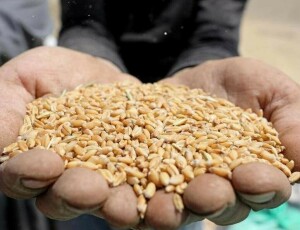Punjab’s Wheat Policy Risks Crisis
The Punjab government’s recent actions regarding wheat pricing are raising concerns, particularly after last year’s significant price drop caused by policy choices. Recent dismissal of farmers’ concerns has heightened tensions. A senior official recently stated that prioritizing a small number of farmers over the broader consumer base is not feasible.
While the principle of avoiding market distortions through price supports is valid, it overlooks the deep-seated issues within Pakistan’s wheat market. Other crops like maize and rice, grown by similar farmers and sold in the same markets, lack price support and experience price declines during harvest due to supply and storage issues.
However, wheat is unique due to its importance as a staple crop and the historical lack of a functional market. Unlike rice and maize, where deregulation has facilitated price discovery, wheat remains constrained by long-standing state intervention.
For instance, the private sector usually absorbs most of a 10-million-ton rice harvest, even if prices are not ideal and storage owners benefit most. Wheat farmers lack this advantage. The wheat sector, covering over 9 million hectares and producing over 30 million tons annually (worth over Rs 2 trillion), dwarfs other crops. Historically, government agencies bought up to 30% of the crop, stabilizing prices. That support is now absent, and the market is unprepared.
The government’s abrupt exit without a gradual transition has flooded the market with an additional 30% of the output, which it cannot handle. This is not effective price discovery but rather value destruction.
Compounding the problem, government agencies are selling old stocks at below-market prices during harvest, ostensibly to reduce storage costs but actually to depress prices ahead of an anticipated shortfall. This deliberate price suppression is seen as detrimental.
Current wheat prices are lower than last year, despite a projected 10–12% production decrease, and below the government’s estimated production cost from two years ago. This occurs amidst 20% inflation, water scarcity, and reduced wheat cultivation areas.
This situation is encouraging farmers to abandon wheat cultivation, with an 11% decrease in area already observed. Continued low prices may lead to further shifts to maize and fodder, affecting food security, rural incomes, and import costs by late 2025.
Existing stocks and distressed sales are temporarily masking the issues. However, a supply shortage later this year could cause panic among market participants and millers. Cheap Pakistani wheat may also be traded informally across borders, further depleting domestic supplies.
This situation is a policy-induced failure under a government facing legitimacy questions and resisting necessary adjustments. A worsening crisis would be a direct result of policy choices. The state must urgently reassess its wheat policy, recognizing that market liberalization requires transitional mechanisms like strategic procurement or warehousing guarantees to prevent instability.



Comments (0)
No comments yet. Be the first to comment!
Leave a Comment